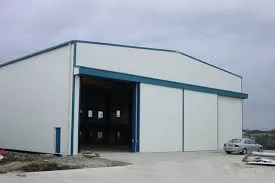- Afrikaans
- Albanian
- Amharic
- Arabic
- Armenian
- Azerbaijani
- Basque
- Belarusian
- Bengali
- Bosnian
- Bulgarian
- Catalan
- Cebuano
- Corsican
- Croatian
- Czech
- Danish
- Dutch
- English
- Esperanto
- Estonian
- Finnish
- French
- Frisian
- Galician
- Georgian
- German
- Greek
- Gujarati
- Haitian Creole
- hausa
- hawaiian
- Hebrew
- Hindi
- Miao
- Hungarian
- Icelandic
- igbo
- Indonesian
- irish
- Italian
- Japanese
- Javanese
- Kannada
- kazakh
- Khmer
- Rwandese
- Korean
- Kurdish
- Kyrgyz
- Lao
- Latin
- Latvian
- Lithuanian
- Luxembourgish
- Macedonian
- Malgashi
- Malay
- Malayalam
- Maltese
- Maori
- Marathi
- Mongolian
- Myanmar
- Nepali
- Norwegian
- Norwegian
- Occitan
- Pashto
- Persian
- Polish
- Portuguese
- Punjabi
- Romanian
- Russian
- Samoan
- Scottish Gaelic
- Serbian
- Sesotho
- Shona
- Sindhi
- Sinhala
- Slovak
- Slovenian
- Somali
- Spanish
- Sundanese
- Swahili
- Swedish
- Tagalog
- Tajik
- Tamil
- Tatar
- Telugu
- Thai
- Turkish
- Turkmen
- Ukrainian
- Urdu
- Uighur
- Uzbek
- Vietnamese
- Welsh
- Bantu
- Yiddish
- Yoruba
- Zulu
Dec . 14, 2024 20:51 Back to list
The Rise of Prefabricated Industrial Steel Buildings
In recent years, the construction industry has witnessed a significant transformation, particularly with the increasing prevalence of prefabricated industrial steel buildings. This innovative approach to building design and assembly is reshaping the landscape of industrial construction, offering numerous advantages over traditional methods.
Understanding Prefabrication
Prefabrication involves the process of manufacturing building components in a controlled factory environment and then transporting them to the construction site for assembly. In the case of industrial steel buildings, this often includes steel beams, columns, and panels that are pre-cut and pre-drilled to specifications. The reduction in on-site construction time is one of the most notable benefits of this method.
Advantages of Prefabricated Steel Buildings
1. Speed of Construction One of the primary benefits of prefabricated industrial steel buildings is the speed at which they can be constructed. Since a significant portion of the work is completed off-site, the on-site assembly can be done quickly, minimizing the time the site is under construction. This efficiency is particularly beneficial for businesses looking to expand or establish operations without prolonged downtime.
2. Cost Efficiency Prefabrication can be more cost-effective compared to traditional construction methods. The streamlined processes employed in factories can lead to reduced labor costs and minimized material wastage. Furthermore, the shorter construction timeline can significantly decrease overhead costs, allowing businesses to allocate resources more effectively.
3. Quality Control Building components manufactured in a factory setting are subject to rigorous quality control standards. This control ensures that each piece meets specific criteria for strength and durability, resulting in a higher-quality final product. Consistency in manufacturing also enhances safety, as parts are fabricated using uniform standards.
prefabricated industrial steel buildings

4. Flexibility and Customization Contrary to the misconception that prefabricated buildings lack design versatility, many manufacturers offer customization options tailored to specific industrial needs. Businesses can choose from various layouts, sizes, and finishes, allowing for a building that meets their operational requirements without compromising aesthetic appeal.
5. Sustainability The significance of sustainable building practices cannot be overstated, especially given the growing emphasis on environmental responsibility in all sectors, including construction. Prefabricated steel buildings can be designed to be energy-efficient, using materials that are often recyclable and minimizing construction waste. Additionally, using steel in construction can contribute to LEED certification and other green building standards.
Applications of Prefabricated Industrial Steel Buildings
Prefabricated steel buildings have opened new avenues for various industries, including manufacturing, warehousing, and distribution. Their design versatility makes them suitable for production facilities, storage units, office spaces, and even retail outlets. As businesses increasingly seek functional yet adaptable spaces, the appeal of prefabricated buildings continues to grow.
Challenges and Considerations
While the advantages of prefabricated industrial steel buildings are numerous, some considerations must be accounted for. Transporting large prefabricated components can pose logistical challenges, especially in urban areas with restricted access. Furthermore, local zoning laws and regulations may influence the design and assembly processes, requiring careful planning and coordination with local authorities.
Conclusion
The rise of prefabricated industrial steel buildings represents a significant evolution in the construction industry. With their array of benefits—speed, cost savings, quality assurance, design flexibility, and sustainable practices—these structures are becoming the go-to solution for many businesses looking to expand their facilities efficiently. As technology advances and manufacturing processes improve, the future of prefabricated buildings looks promising, reinforcing their status as a key player in modern industrial construction.
-
How Do Prefabricated Steel Structures Transform Modern Construction?
NewsJul.14,2025
-
How Do Prefabricated Metal Buildings Redefine Modern Construction?
NewsJul.14,2025
-
How Do Prefab Insulated Metal Buildings and Steel Structures Revolutionize Modern Construction?
NewsJul.14,2025
-
How Do Pre - Engineered Steel Structures Redefine Modern Construction?
NewsJul.14,2025
-
Advancing Modular Construction with Prefabricated Metal Structures
NewsJul.14,2025
-
Advancing Industrial Infrastructure with Prefabricated Steel Solutions
NewsJul.14,2025
Products categories
Our Latest News
We have a professional design team and an excellent production and construction team.












